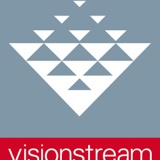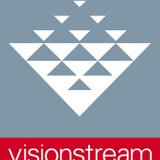Information
PLANT INSPECTION CHECKLIST DETAILS
-
Visionstream are committed to providing employees with safe workplaces, safe equipment and safe work systems of work. The purpose of Light Vehicle Inspections is to assist managers to take a proactive approach to vehicle safety through early identification of vehicle hazards. The Inspection Checklist is not meant to certify the roadworthiness of the vehicle. Any items identified as unsafe or defective must be brought to the attention of the Fleet Manager for further action.
Any items identified as unsafe or defective must be brought to the attention of the employee’s or contractor’s Manager for further action. Any defects which affect the performance/safe operation of the plant are to be reported to supervisors so that they can be rectified. Under no circumstances are operators to ignore defects or postpone reporting them. Machines with such defects are to be withdrawn from operation until rectified. -
Date of Inspection:
-
Location:
-
Project:
-
Employee Inspected Name:
-
Type of Activity:
ITEMS APPEARING TO BE IN SAFE WORKING ORDER SHALL BE MARKED "YES" ITEMS IDENTIFIED AS DEFECTIVE OR UNSAFE SHALL BE MARKED "NO" AND MUST BE REPORTED TO THE FLEET MANAGER IMMEDIATELY
CHOOSE TYPE OF PLANT TO BE INSPECTED:
-
Backhoe
-
Bobcat
-
Cable Trailer
-
Chain Saw
-
Circular Saw
-
Compressor
-
Concrete Cutter
-
Concrete Saw
-
Crane Truck
-
Dingo
-
Ditches
-
Dozer
-
EWP - < 11 m
-
EWP - Articulated
-
EWP - Scissor
-
EWP - Telescopic
-
Excavator
-
Generator
-
Grundomat
-
Jackhammer
-
Mole Plough
-
Plate Compactor
-
Scraper
-
Skid Steer
CHECK ITEMS:
-
1. Are Plant Operators / Dogmen properly qualified?<br><br>Workers operating certain types of powered mobile plant must hold appropriate Worksafe / Workcover Certificates of Competency or Notice of Assessment – see below for details of plant.
-
2. Is a Seat belt fitted and in good condition?<br><br>All items of mobile plant, which can be sat on, must have a properly constructed seat, which is fitted with a properly constructed and attached seat belt.
-
3. Have Operators been given training in the use of the particular machine?<br><br>Make sure that operators are familiar with their plant and attachments, and that they have the operators manual & understand the safe operating procedures for the work.
-
4. Is the plant fitted with reversing beepers / travel alarms and flashing lights?<br><br>Make sure that all types of mobile plant are fitted with properly operating devices to warn people who are at risk from their movement. A combination of flashing lights and reversing beeper is strongly recommended.
-
5. Is the plant currently registered with Worksafe / Workcover?<br><br>Some items of plant need to have a current plant registration before they can be operated in the workplace. (see below for list of plant which must be registered.
-
6. Is Hearing Protection provided where necessary?<br><br>Is hearing protection being worn by all workers when noisy equipment is in use? (i.e. when the workers have to raise their voices to be heard above the plant)
-
7. Plant Register?<br><br>Does the contractor maintain an up-to-date register of the specific items of plant in the workplace requiring a preventative maintenance program? Form VS-SC-FRM-009 in Sect 2 of Field Workforce Pack
-
8. Are safety harnesses being used where necessary?<br><br>Boom type EWPs should have a safety harness and lanyard for each person working in the basket.
-
9. Is the plant properly maintained, checked and serviced?<br><br>Check the plant log / maintenance record. Make sure that all the inspection and service checks recommended by the supplier are carried out at the appropriate intervals. Make sure that plant found to be unserviceable is taken out of operation until it is repaired or replaced.
-
10. Is the plant fitted with ROPS and FOPs?<br><br>Tractors, rough terrain equipment or other mobile plant over 1 tonne subject to the risk of overturning need a properly constructed and fitted roll-over protective structure (ROPS) to safeguard the operator from injury. Likewise, where there is a danger of falling objects, a suitable and robust Falling Object Protective structure (FOPS) is required.
-
11. Has the Operator completed a Pre-start checklist on the plant before turning it on today?<br><br>Check that the operator has carried out a pre-operation safety and operations inspections of each unit. At the start of each shift, each plant operator will undertake a prestart inspection of the plant assigned to them using a Prestart Inspection Checklist
-
12. Is the plant working in an area where it is likely to impinge a No Go Zone?<br>Is a Spotter on site?<br><br>For cranes, concrete placing booms, excavating equipment and elevating work platforms, there are specified zones around power lines where a spotter is required. A "spotter" is a safety observer who is competent for the sole task of observing and warning against the unsafe approach to overhead power lines and other electrical apparatus.
-
13. Is there a current Plant Risk Assessment for this particular item of Plant on site?<br><br>Occupational Health and Safety Plant Regulations, require an employer to provide a Plant Risk Assessment for any item of plant used at a workplace. A Plant Risk Assessment is required for each specific make, model or design of the plant being used in the workplace.
-
14. Is the plant clean, and free from oil leaks or other obvious faults<br><br>Check on cleanliness of plant to ensure that there is no chance of spreading weeds, dieback or other fungal diseases. Any oil leaks or other obvious faults are to be rectified promptly
-
15. Have the controls indicated on the Plant Risk Assessment been fully implemented?
-
16. Does the plant have Machine Guarding?<br><br>Are guards fitted to equipment where there is a risk of limbs, hair or clothing (eg unguarded belts, pulleys, cutters etc.)
-
17. Is a First Aid Kit, Spill Kit and Fire Extinguisher provided on site for powered plant?
-
18. Is unattended plant properly secure?<br><br>Loads should never be left suspended. EWPs and earthmoving plant should be fully lowered. Where it is necessary to leave plant adjacent to public roads or pedestrian areas, make sure it is secure against vandalism or joyriding
-
19. Is the plant being used for subterranean activities where it may encounter underground services?<br><br>Check to see if Dial Before You Dig plans are in place and being used
-
20. Is there a Traffic Management Plan in place and has traffic management been included as part of the JSA / SWMS?
INFORMATION:
Items of Plant Requiring Workcover Registration
• Amusement structures. • Boilers and pressure equipment • Building maintenance units • Concrete placing units (truck mounted with boom) • Lifts • Mobile cranes • Tower cranes
Loadshifting Plant Requiring Notice of Assessment
LF - Forklift Trucks LO - Order-picking Forklift Trucks LC - Cableway/Flying Foxes LB - Front-end Loader/Backhoes LL - Front End Loader LS - Front End Loader (Skid Steer Types) LE - Excavators LD - Draglines LZ - Dozers These codes often appear on the Operator’s Certificate of Competency or Notice of Assessment without stating the type of plant which they represent
Categories of Plant Requiring a Certificate of Competency Certificates of Competency are no longer issued for Loadshifting equipment. The registered assessor will issue a Notice Of Assessment, which must be kept by the operator as proof of competency. Certificates of competency are recognised in all States & Territories
Scaffolding SB - Basic scaffolding SI - Intermediate scaffolding SA - Advanced Scaffolding Rigging DG - Dogging RB - Basic rigging RI - Intermediate rigging RA - Advanced rigging Pressure equipment BB - Basic boiler BI - Intermediate boiler BA - Advanced boiler TO - Turbine operator ES - Reciprocating steam engine PB - Concrete placing boom Crane & hoist operation CT - Tower crane CD - Derrick crane CP - Portal boom crane CB - Bridge or gantry crane CV - Vehicle loading crane CN - Non-slewing mobile crane (over 3 tonnes) C2 - Slewing mobile crane (up to 20 tonnes) C6 - Slewing mobile crane (up to 60 tonnes) C1 - Slewing mobile crane (up to 100 tonnes) C0 - Slewing mobile crane (over 100 tonnes) WP - Boom-type elevating work platform (boom length 11 metres or more) HM - Materials hoist (cantilever platform) HP - Personnel (and materials) hoist
Except in an emergency or under a Worksafe / Workcover exemption, a person must not perform or direct another person to perform the work using any of the above items of plant unless the person doing the work has the appropriate certificate of competency. The maximum number of persons without a certificate being supervised by a person who holds the relevant certificate is limited as follows Supervisor holds certificate for work listed in: Schedule A of the National Standard (ie scaffolding & rigging) Maximum number of persons without certificate being supervised: 4 Schedule B or C of the National Standard (all other categories) Maximum number of persons without certificate being supervised: 1
-
Visionstream Field Manager:
-
Sub Contractor













